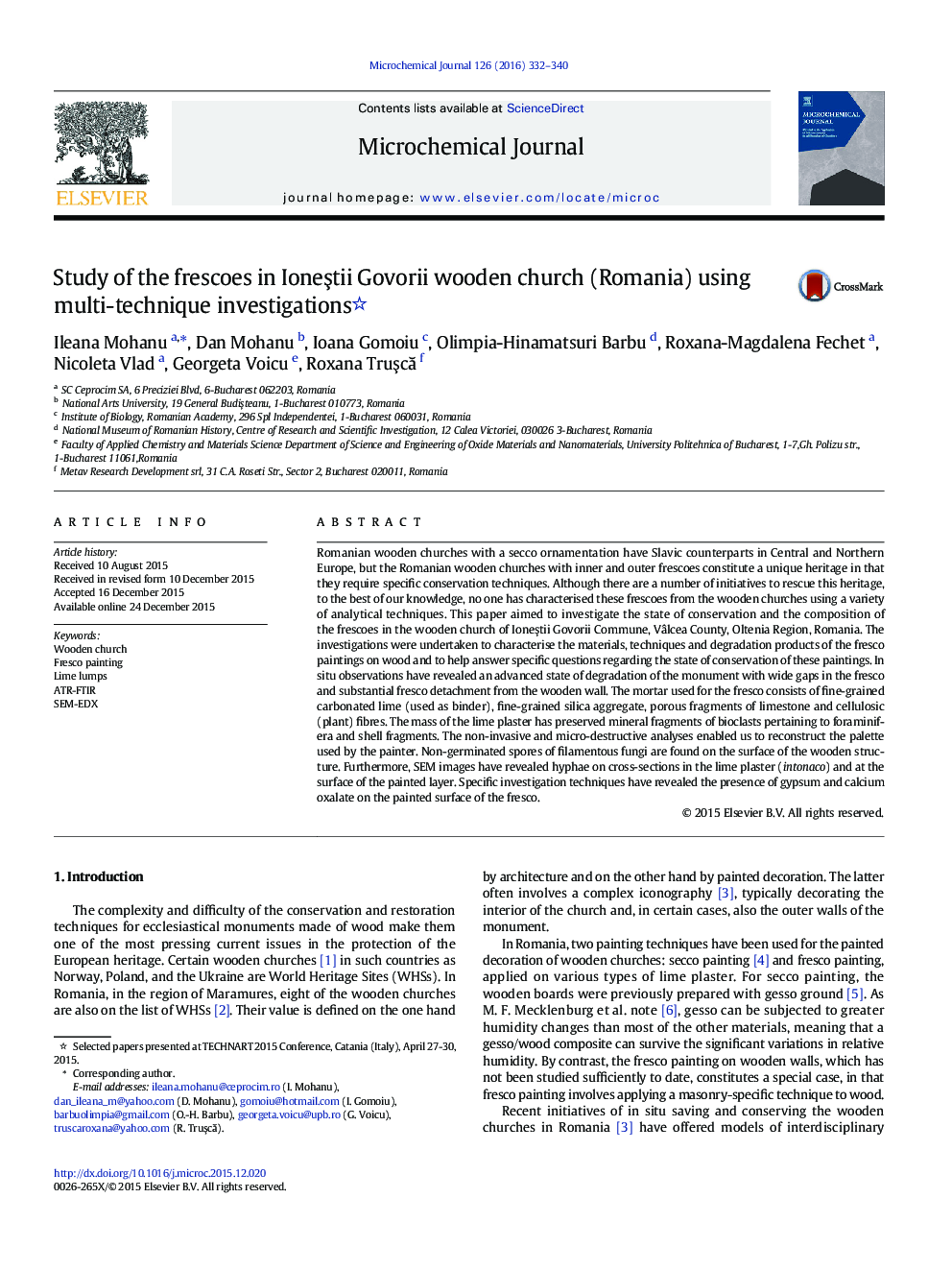| Article ID | Journal | Published Year | Pages | File Type |
|---|---|---|---|---|
| 7641620 | Microchemical Journal | 2016 | 9 Pages |
Abstract
Romanian wooden churches with a secco ornamentation have Slavic counterparts in Central and Northern Europe, but the Romanian wooden churches with inner and outer frescoes constitute a unique heritage in that they require specific conservation techniques. Although there are a number of initiatives to rescue this heritage, to the best of our knowledge, no one has characterised these frescoes from the wooden churches using a variety of analytical techniques. This paper aimed to investigate the state of conservation and the composition of the frescoes in the wooden church of IoneÅtii Govorii Commune, Vâlcea County, Oltenia Region, Romania. The investigations were undertaken to characterise the materials, techniques and degradation products of the fresco paintings on wood and to help answer specific questions regarding the state of conservation of these paintings. In situ observations have revealed an advanced state of degradation of the monument with wide gaps in the fresco and substantial fresco detachment from the wooden wall. The mortar used for the fresco consists of fine-grained carbonated lime (used as binder), fine-grained silica aggregate, porous fragments of limestone and cellulosic (plant) fibres. The mass of the lime plaster has preserved mineral fragments of bioclasts pertaining to foraminifera and shell fragments. The non-invasive and micro-destructive analyses enabled us to reconstruct the palette used by the painter. Non-germinated spores of filamentous fungi are found on the surface of the wooden structure. Furthermore, SEM images have revealed hyphae on cross-sections in the lime plaster (intonaco) and at the surface of the painted layer. Specific investigation techniques have revealed the presence of gypsum and calcium oxalate on the painted surface of the fresco.
Related Topics
Physical Sciences and Engineering
Chemistry
Analytical Chemistry
Authors
Ileana Mohanu, Dan Mohanu, Ioana Gomoiu, Olimpia-Hinamatsuri Barbu, Roxana-Magdalena Fechet, Nicoleta Vlad, Georgeta Voicu, Roxana TruÅcÄ,
